[00:00:00] Mark Tomlinson: The next section, I want to give you the three basic elements or concepts required for successful exploration, and this is helping you to figure out how to move through a system from end to end and be successful with everything that you need to understand. And it comes down to three core things that maybe elude you, especially if you've lived in code and testing and you've never really been hands on with hardware and more. [00:00:33][33.4]
[00:00:34] The more advanced or the more experienced you get with performance, the more you're going to have to understand that there are there are these three main things. And the first one is that everything and I mean everything is a computer. And when I say everything is a computer, I mean everything that you can get your hands on. And let me let me go show you a few of these items. Everything is a computer, right? Things that you didn't think were computers are computers. Now, the first thing you might think about is, hey, I've built a PC and this is what a computer looks like. Right. [00:01:14][40.2]
[00:01:15] So here's some CPU. That's probably the main ingredients you need and that's connected somehow internally to the memory. Right. So the memory is connected. I probably have some storage here. There's the sanded ports right there. Maybe I have an idea port that goes in as well. There's the display. So I have input output. And then, of course, on the end, I probably have a network jack somewhere in here, I have the audio jack, etcetera, video displays, everything you need. [00:01:41][26.6]
[00:01:42] So a lot of people think, hey, that's a computer and a computer is just the thing that is a computer. Some people may never even seen the inside of a computer. And unless you know what you're doing, I don't recommend taking your computer apart to get it. This is not working by the way. So that's a computer right now. Well, what you might not think is in other things, like a Raspberry Pi. Raspberry Pi is another example of a really small version of a computer. And again, there's a CPU, the litle heatsink on there, right. On the end, we've got network, so CPU network, there's a memory that's lives on the DIMM. [00:02:17][35.6]
[00:02:17] There's another DIMM in here for the memory, right. There's actually on board display as well. And then on the end there's a little SD mini-SD card. So we have storage. That's disk, CPU, disk, memory network. Now other things. Here's another little computer. This is called a cube boxes. And I too. And again, this is pretty cool internal to this guy. Again, a super mini little computer, but it's a computer inside a computer inside a very small box. This thing you might not know is that, like this is your Wi-Fi router sitting in your house. Right. [00:02:49][31.5]
[00:02:49] So here's a Wi-Fi router. Guess what you might think? Oh, it's just network. Yeah. So if all the computer resources, all this to has is a network, but actually inside here, it's a computer, it has a CPU, actually has multiple microprocessors and has little buffered memory, has some RAM, has CPU, so can CPU probably has a little bit of disk. In fact I can even add USB ports, I can actually put more storage right on this. So it is this inside is a mini computer. Just so happens I have another Wi-Fi router. It's a little bit smaller and it only has one antenna. [00:03:25][35.3]
[00:03:25] But again, network, CPU, disk, memory and network inside this little guy. Here's, by the way, I have another router. Now, why does this one have three antennas and the other one only had like it has one kind of lame antenna story. So why does this one have three antennas? So three antennas because it has more throughput, ah more network resources. So you get the same sort of four ports of physical Ethernet, but now you've got three antennas to move things faster because three is better than one antenna, of course. But again, it's also got a USB port. It's got stored inside here. [00:04:03][38.0]
[00:04:04] There you're going to find a microprocessor. In fact, you might find two microprocessors. You might find one microprocessor on each of the three antennas. So you could have a little coprocessors and then a main processor for the router. And that's a computer inside a computer. Right. So you've got multiple processors making that happen. Here's just a USB network adapter and you'd think, oh, that's not a computer. That's just that's just network. Aha. [00:04:28][24.1]
[00:04:28] But there's actually a little bit of network buffer, so there's a little bit of memory buffer in that it has microprocessors so it can actually communicate and do that and it has to make sense of everything that's plugged in on the USB end. So it's got a little bit of storage. It has a microprocessor. So that CPU and storage and it's a network. It has still got CPU, disk, network. And of course it's got a little memory that may not have a really big disk or anything like that, but it's a computer inside a computer. In fact, the phone that is on right here that you're talking to me on is a mini computer, the phone that you're watching this on, has a CPU, disk, memory, network. [00:04:28][0.0]

Comments are closed.